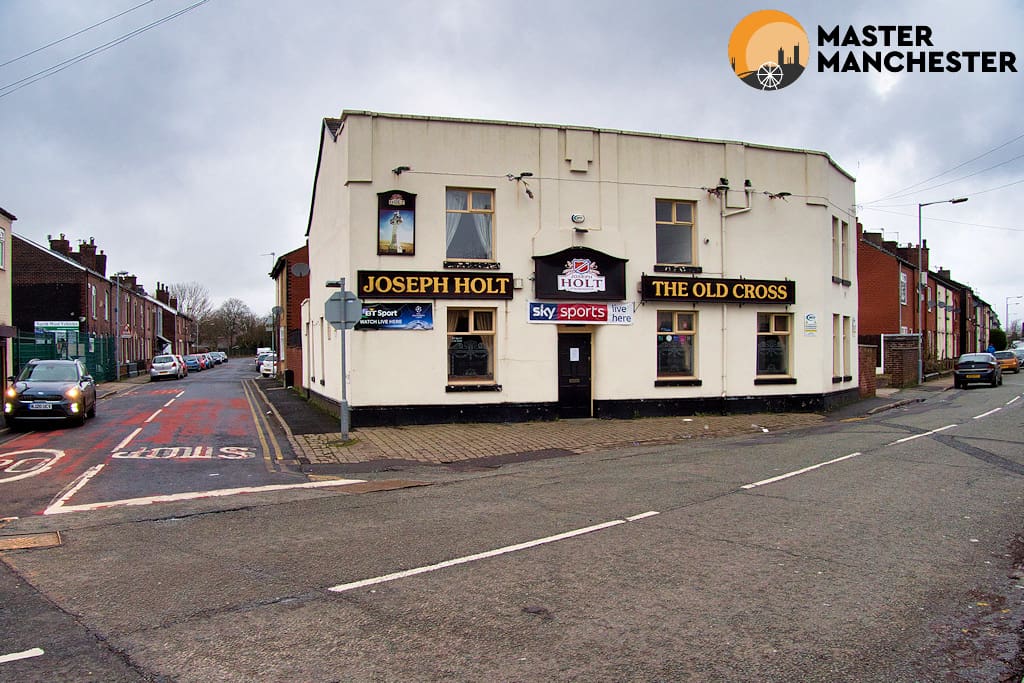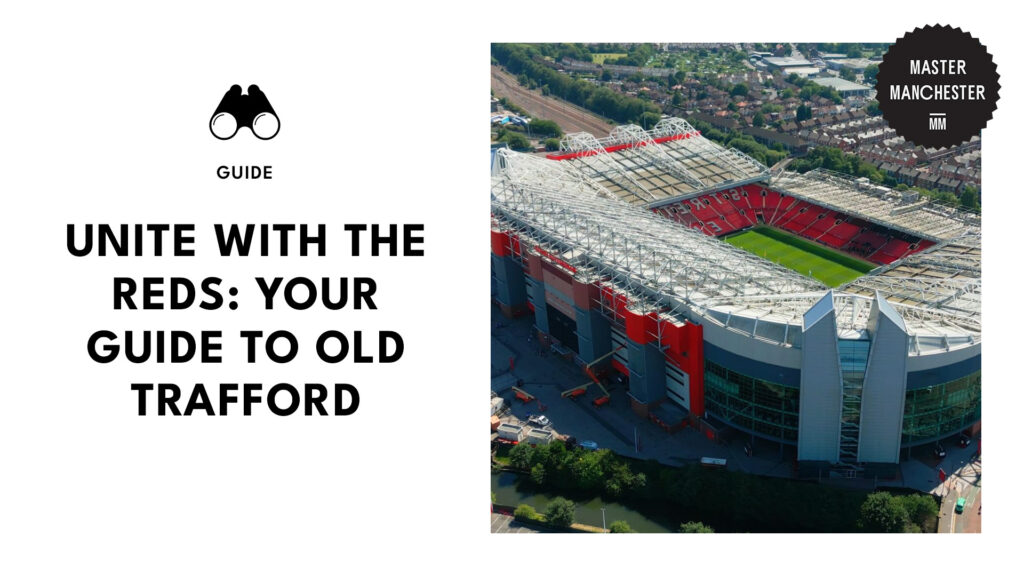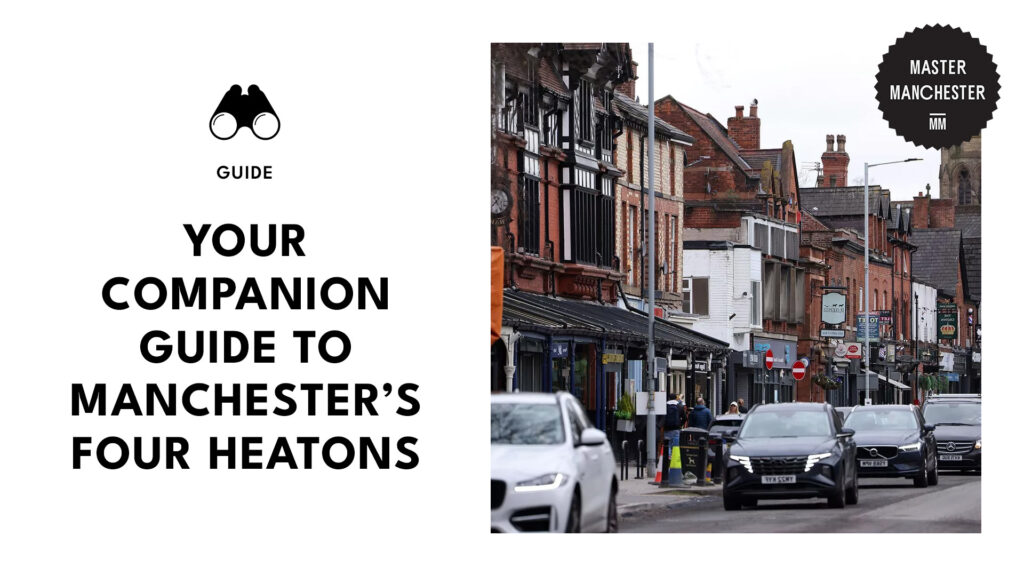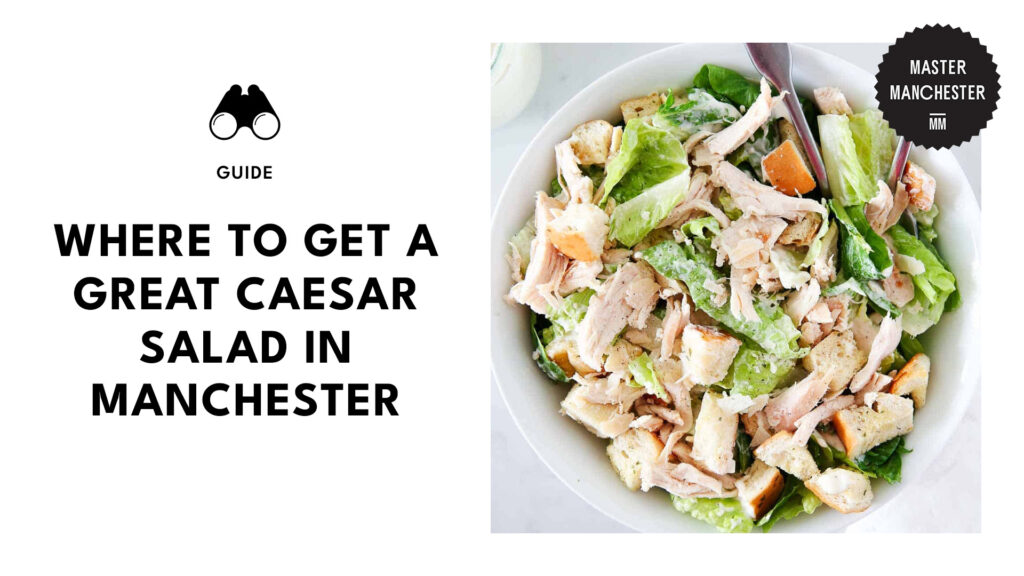Categories > Guides and Tips

What is Radcliffe Manchester famous for?
- Pioneering Role in the Industrial Revolution
- Radcliffe's Continued Success
- Radcliffe's Industrial Revolution Highlight
- Unique Cuisine
- The Hotpot
- Radcliffe Pastries
- Classic Fish and Chips
- Diversity in Food
- Green Spaces
- Close Park
- Outwood Country Park
- Red Bank Wood Local Nature Reserve
- Hollinhurst Wood
- Hardy's Gate Park
- Iconic Landmarks and Monuments
- Radcliffe Tower
- East Lancashire Paper Mill
- Outwood Colliery Engine House
- St Thomas' Church
- Radcliffe War Memorial
- A Robust Transport Network
- Radcliffe's Railway Stations
- The Best Metrolink Station in Manchester
- Bikers and hikers are not forgotten
- Easy Transport to the Manchester Airport
- Arts and Culture in Radcliffe: A Local Perspective
- Where is the heart of Radcliffe's art centre?
- Radcliffe's Literary Significance
- Theatre and the Likes
- Grand Murals and Cultural Pieces
- Sporting Achievements
- The Radcliffe Athletic Club
- Radcliffe in the Premier League
- Radcliffe Legends
- Radcliffe in the Snooker Scene
There’s a lot of great places in Manchester, and one of them is the hearty and historical grounds of Radcliffe— one of Britain’s most holistic areas to visit for tourists and locals alike.
Radcliffe, Manchester is best known for its rich industrial history, particularly in textiles during the Industrial Revolution. It’s also a part of Manchester that has great gardens and establishments like libraries and fountains to visit.
Care to join our fairly awesome tour to this amazing city landscape? Read on below to find out more!
Pioneering Role in the Industrial Revolution

Radcliffe played a crucial role during the Industrial Revolution, primarily thanks to its flourishing textile industry.
Moreover,Radcliffe’s strategic geographical position near the confluence of the rivers Irwell and Roch enabled it to fully capitalise on the potential of water power. This was vital in the early stages of the revolution when water-powered cotton spinning mills were prominent.
Radcliffe’s Continued Success
As technology advanced, Radcliffe stayed at the forefront, swiftly adopting steam power to drive its factories.
The town’s mills were among the first to transition to this new source of power, showing Radcliffe’s innovative spirit. The use of steam power allowed for a significant increase in productivity and efficiency, enabling factories to produce vast amounts of cotton goods.
The textile industry’s growth in Radcliffe created thousands of jobs, drawing workers from far and wide.
It fundamentally reshaped the town’s social structure, driving urbanisation and forming tightly knit communities. These communities revolved around the mills, with workers’ lives deeply intertwined with the rhythm of the factories.
Radcliffe’s Industrial Revolution Highlight
One standout symbol of Radcliffe’s industrial prowess was the East Lancashire Paper Mill. Established in 1860, this mill was a significant employer in the town for over a century, and its closure in 2001 marked the end of an era.
The combination of technological innovation, industrial growth, and social change that Radcliffe experienced during the Industrial Revolution left an indelible mark on its character. Even today, the town’s physical and cultural landscapes bear the imprints of this transformative era.
The legacy of Radcliffe’s pioneering role in the Industrial Revolution is still evident in the proud industrial heritage of the town and its people.
Unique Cuisine
When it comes to local gastronomy, Radcliffe, like many towns in the Manchester area, showcases the culinary traditions of North West England. Here, the local cuisine offers a hearty combination of simple ingredients and comforting flavours.
The Hotpot
One signature dish is the classic Lancashire Hotpot, a slow-cooked stew traditionally made with lamb or mutton, onion, and potatoes, often served with pickled red cabbage or beetroot.
This hearty, rustic dish epitomises the region’s food culture with its emphasis on simple, locally sourced ingredients and heart-warming comfort food.
Radcliffe Pastries
Another cornerstone of Radcliffe’s local cuisine is the pasty, a baked pastry filled with various ingredients.
Traditional fillings include minced meat, onions, and potatoes, but variations abound, and you might find pastries filled with cheese, vegetables, or even sweet fillings. It’s a versatile dish, reflecting the diversity and adaptability of Radcliffe’s culinary traditions.
Classic Fish and Chips
Fish and chips, a British classic, are also a staple in Radcliffe. Local chip shops, or ‘chippies’, serve up crispy battered fish with thick-cut fries, often accompanied by mushy peas and a generous splash of vinegar.
This dish, although common throughout the UK, forms a significant part of the local culinary scene, with each chippy offering their unique twist.
Diversity in Food
Radcliffe’s gastronomy also mirrors Manchester’s increasingly diverse food scene, reflecting the influence of international cuisines brought by various immigrant communities.
From Indian curries to Italian pastas and Chinese takeaways, the culinary landscape of Radcliffe is a blend of traditional local dishes and global flavours.
Whether it’s the hearty simplicity of a Lancashire Hotpot or the comforting crunch of fish and chips, Radcliffe’s gastronomy offers a unique and authentic taste of North West England. It’s a culinary heritage that tells a story of the town’s history, its people, and their connection to the wider world.
Green Spaces

Radcliffe, despite its industrial past, is blessed with a wealth of green spaces that offer respite from the hustle and bustle of town life. These parks and gardens serve as the town’s lungs, offering residents and visitors alike a chance to connect with nature.
Close Park
Located in the heart of Radcliffe, Close Park is a family-friendly spot with a range of facilities, including a children’s play area, bowling greens, and sports courts.
There’s also a war memorial, paying tribute to local heroes. The Pavilion Café within the park is a great spot to enjoy a cup of coffee amidst the verdant greenery.
Outwood Country Park
Once an area dominated by coal mining, Outwood Country Park has been transformed into a haven for wildlife and a wonderful spot for a leisurely stroll or cycle.
With fantastic views over Manchester and the Pennines, it offers a network of trails that weave through woodland, ponds, and the remains of the old Outwood Colliery, adding an element of industrial history to the natural beauty.
Red Bank Wood Local Nature Reserve
Situated to the east of Radcliffe, this nature reserve is a treasure trove of biodiversity. A mixture of woodland, scrub, and grassland habitats support a wide variety of wildlife.
Also, Red Bank Wood is an ideal spot for birdwatching or simply enjoying a quiet moment in nature.
Hollinhurst Wood
This ancient semi-natural woodland on the northern edge of Radcliffe is a beautiful, tranquil place, with an array of local flora and fauna.
With pathways meandering through the tall trees, it’s an excellent place for a peaceful walk, particularly in the spring when the woodland floor is carpeted with bluebells.
Hardy’s Gate Park
A relatively new addition to Radcliffe’s green spaces, Hardy’s Gate Park has been designed as a flood storage area to manage river levels, but also serves as an attractive recreational space with wildflower meadows, trees, and a network of paths.
Iconic Landmarks and Monuments

Radcliffe’s rich history has led to the creation of several iconic landmarks and monuments, each bearing witness to different eras and events in the town’s past.
From ancient structures to tributes to its industrial heritage, these landmarks add depth to Radcliffe’s character and offer fascinating insights into its history.
Radcliffe Tower
As mentioned earlier, the most significant historical landmark in Radcliffe, the Tower is all that remains of a manor house built by James de Radcliffe in the 1400s. The Tower, a Grade I listed building, provides a tangible link to the mediaeval past and is a must-visit for history enthusiasts.
East Lancashire Paper Mill
A symbol of Radcliffe’s industrial past, the mill was a cornerstone of the town’s economy during the Industrial Revolution. Though the mill ceased operations in 2001, its buildings still stand, reminding us of the era when Radcliffe was a bustling hub of textile production.
Outwood Colliery Engine House

Located in Outwood Country Park, the Engine House is a poignant reminder of Radcliffe’s coal mining history. The structure, though derelict, is an iconic sight in the park, its stark silhouette echoing the town’s industrious past.
St Thomas’ Church

An iconic part of Radcliffe’s skyline, this church dates back to the 19th century. The beautiful stained glass, impressive architecture, and peaceful surroundings make it a serene and historically significant spot.
Radcliffe War Memorial

Situated in Close Park, this monument commemorates local servicemen who lost their lives in World Wars I and II. It’s a solemn reminder of Radcliffe’s contribution to global conflicts and a place for reflection.
A Robust Transport Network

Radcliffe’s robust transport network plays a vital role in connecting it to the wider Manchester region, positioning it as a key hub for both locals and visitors.
This extensive network not only supports daily commutes and local travel but also contributes significantly to regional connectivity and economic growth.
Radcliffe’s Railway Stations
The town is well-served by both road and rail networks. The M60 and M62 motorways are easily accessible from Radcliffe, connecting it to major cities like Manchester, Liverpool, and Leeds. The A665, which passes through the town, offers a direct route to nearby Bury and Bolton.
The Best Metrolink Station in Manchester
Radcliffe’s Metrolink station is a part of Manchester’s light rail system. It provides frequent and reliable tram services to destinations such as Bury, Manchester city centre, and Altrincham.
The Metrolink has played a significant role in enhancing the accessibility of the town, making it an attractive choice for commuters.
Bus services in Radcliffe are plentiful, with numerous routes providing connectivity within the town and to surrounding areas.
These services are operated by various companies, including Manchester and Rosso. Regular buses link Radcliffe with Manchester city centre, Bury, Bolton, and other nearby towns, offering a convenient and cost-effective travel option for residents.
Bikers and hikers are not forgotten
For cyclists and walkers, Radcliffe offers a network of pedestrian paths and cycle routes. These include paths along the River Irwell and the scenic Outwood Trail, a converted railway line that’s now a popular route for walkers, cyclists, and horse riders.
Easy Transport to the Manchester Airport
Lastly, the nearby Manchester Airport, the third busiest in the United Kingdom, provides domestic and international air connections, making Radcliffe easily accessible from almost anywhere in the world.
Radcliffe’s transport network is a testament to the town’s strategic importance within the Manchester region. By facilitating movement and connectivity, this robust network supports the town’s economic vitality, community life, and growth potential.
Arts and Culture in Radcliffe: A Local Perspective
The arts and culture scene in Radcliffe offers a compelling blend of the traditional and contemporary, reflecting the town’s rich history and its modern, vibrant community.
Where is the heart of Radcliffe’s art centre?
At the heart of Radcliffe’s cultural life is the Radcliffe Market Hall. This revamped historic building is a hub for local artisans and food producers, hosting regular markets where residents and visitors can browse a diverse array of crafts, artwork, and locally produced foods.
Regular events, from live music to workshops, also take place here, fostering a sense of community and creative collaboration.
Radcliffe’s Literary Significance
Radcliffe Library, located on Stand Lane, is another significant cultural venue. Beyond its function as a repository of books and resources, the library frequently hosts events such as author visits, reading groups, and children’s storytimes.
It’s a vital resource for local residents of all ages, encouraging learning, literacy, and a love of literature.
Theatre and the Likes
For those interested in performing arts, Radcliffe Borough Band, an accomplished brass band, holds regular performances in and around the town.
Additionally, local amateur theatre groups often stage productions, providing a platform for local talent and an opportunity for community members to experience the thrill of live performance (theatres in Manchester).
Grand Murals and Cultural Pieces
Art installations and murals around the town also contribute to Radcliffe’s cultural landscape. These works, often created by local artists, add colour and creativity to public spaces, celebrating the town’s heritage and its vibrant contemporary spirit.
Also, the annual Radcliffe Carnival is a high point of the town’s cultural calendar. This community event, featuring live music (music lessons manchester), performances, a parade, and plenty of family-friendly activities.
This brings together the whole town in a festive celebration of Radcliffe’s unique character and community spirit.
The arts and culture scene in Radcliffe is a reflection of its diverse and dynamic community. Through a range of venues, events, and initiatives, the town offers a vibrant cultural life that values its rich history while embracing the creativity and energy of its residents.
Sporting Achievements

Radcliffe has made significant contributions to British sports over the years, both through its local sporting institutions and the achievements of individuals hailing from the town.
The Radcliffe Athletic Club
Firstly, the Radcliffe Athletic Club is perhaps the most well-known sporting institution in the town. Established in 1984, the club has nurtured numerous athletes over the years who have competed at regional and national levels.
The club’s most prominent event, the Radcliffe 10k race, draws runners from across the UK, making a significant contribution to the country’s running scene.
Radcliffe in the Premier League
Radcliffe’s football heritage (Why does Manchester have 2 teams?) is represented by Radcliffe FC, a semi-professional football club that plays in the Northern Premier League.
Over the years, the club has nurtured local talent and provided a platform for players to launch their careers. The club’s stadium, the Neuven Stadium, is a central hub for football in the community.
Radcliffe Legends
In the realm of individual achievement, Radcliffe has been the birthplace of several professional athletes.
Notably, Craig Dawson, a professional footballer, was born in Radcliffe. Dawson has had an impressive career, playing for teams in the English Premier League and representing England at the Under-21 level.
Another notable sporting figure from Radcliffe is Scott Quigg, a professional boxer who held the WBA super-bantamweight title from 2013 to 2016. Quigg’s success has inspired many local youngsters to take up boxing, further enriching Radcliffe’s sporting scene.
Radcliffe in the Snooker Scene
Finally, the town has also made a significant contribution to the sport of snooker. Andrew Higginson, a professional snooker player who reached the final of the 2007 Welsh Open as a qualifier, was born in Radcliffe.
Radcliffe’s sporting achievements are a testament to the town’s robust local sports infrastructure and the talents of its residents. These achievements have not only brought recognition to Radcliffe but have also enriched the broader landscape of British sports.





